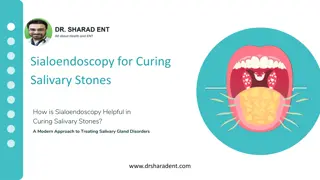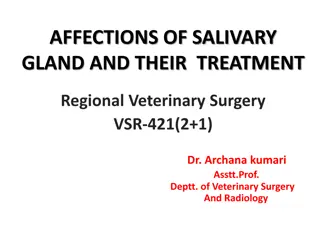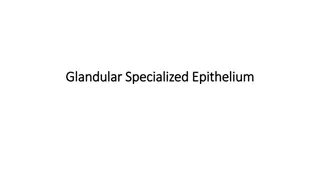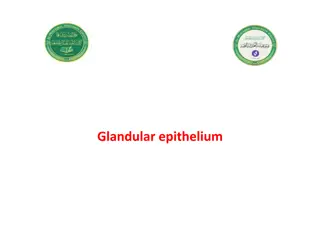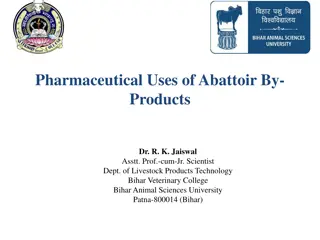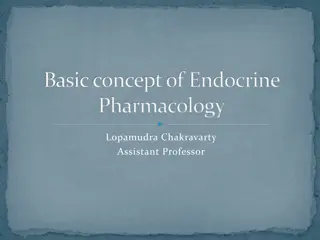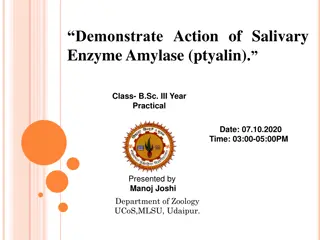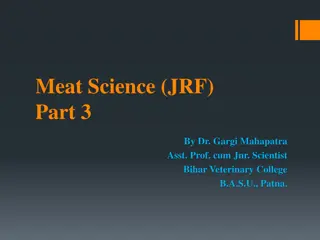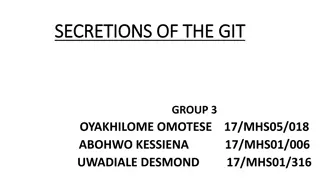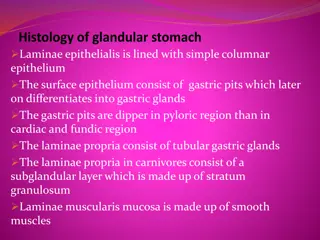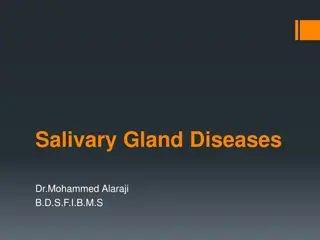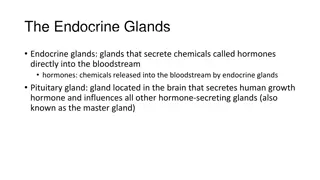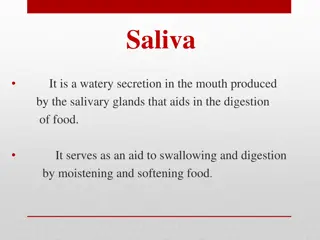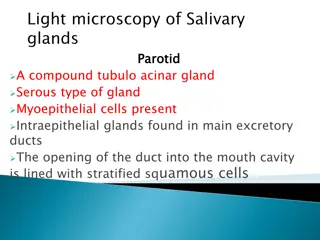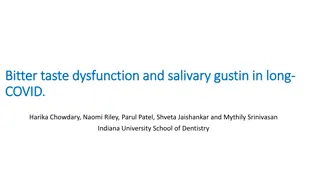SALIVARY GLANDS
The functions of saliva, connective tissue structure, and clinical considerations associated with salivary glands. Learn about pH maintenance, tooth integrity, excretory function, and mucous membrane protection provided by saliva. Gain insights into the role of salivary mucin in maintaining oral health.
Download Presentation

Please find below an Image/Link to download the presentation.
The content on the website is provided AS IS for your information and personal use only. It may not be sold, licensed, or shared on other websites without obtaining consent from the author.If you encounter any issues during the download, it is possible that the publisher has removed the file from their server.
You are allowed to download the files provided on this website for personal or commercial use, subject to the condition that they are used lawfully. All files are the property of their respective owners.
The content on the website is provided AS IS for your information and personal use only. It may not be sold, licensed, or shared on other websites without obtaining consent from the author.
E N D
Presentation Transcript
Purpose Statement At the end of the lecture the student should be able to describe the functions of saliva, structure of connective tissue, clinical considerations.
Learning Objectives At the end of the lecture the student should be able to S.N. Learning Objectives Domain Level Criteria Conditio n 1 Cognitive Must Know Must Know Must Know All Enumerate functions of saliva 2 Cognitive All Describe structure of connective tissue 3 Cognitive All Enlist Clinical considerations
CONTENTS Enumerate functions of saliva Describe structure of connective tissue Enlist Clinical considerations
8)MAINTENANCE OF pH- Saliva is effective in helping to maintain relatively neutral pH in the oral cavity as well as Oesophagus. Salivary bicarbonate is responsible for maintenance of pH. At rest histidine rich peptidine and to a lesser extent, phosphates contribute to buffering action.
9) MAINTENANCE OF TOOTH INTEGRITY- After the eruption, the crown of the tooth is fully formed morphologically but it is crystallographically incomplete. Interaction via diffusion of ions such as calcium, phosphorous, magnesium and fluoride into surface enamel increases surface hardness, decreases permeability and increases resistance to caries.
10)EXCRETORY FUNCTION- Many drugs as well as alcohol are excreted into saliva ,which could theoretically serve as a route of elimination.
11)MAINTENANCE OF MUCOUS MEMBRANE INTEGRITY- The salivary mucin posses properties such as low solubility, high viscosity, elasticity and adhesiveness which enable them to concentrate on oral mucosal surface ,where they provide an effective barrier against dessication and environmental insults.
The glycosylated mucin of saliva are resistant to proteolysis.
CONNECTIVE TISSUE Cells fibroblasts, macrophages, mast cells,leukocytes,plasma cells,& fat cells. Collagen & reticular fibers. Ground substance. Vascular supply Nerve supply
Nerve supply The secretory cells receive their innervation by two patterns 1. Subepithelial 2. Intraepithelial
Autonomic nervous system 1. Sympathetic (Adrenergic) 2. Parasympathetic (Cholinergic)
Various neurotransmitters like substance P, vasoactive intestinal polypeptide (VIP), release from the vesicles in the nerve terminals adjacent to the parenchymal cells stimulates them to discharge their secretory granules & secrete water & electrolytes.
Norepinephrine ,the sympathetic transmitter ,interacts with both - & -adrenergic receptors , & acetylcholine interacts with the cholinergic receptors -adrenergic receptors--Protein secretion . -adrenergic & cholinergic receptors mainly water & electrolyte secretion ,but also low levels of Protein secretion
CLINICAL CONSIDERATIONS Age changes Diseases Xerostomia (dry mouth)
Age changes Generalised loss of parenchymal tissues. Replacement with adipose tissue. Increase in fibrous connective tissue . Decrease production of saliva.
Diseases Inflammatory diseases ,Viral(mumps) , Bacterial infections . Autoimmune diseases such as Sjogren s syndrome. Genetic diseases such as cystic fibrosis. Sialoliths ( salivary stone). Mucocele . Benign & malignant tumors. Various systemic & metabolic diseases
Xerostomia (dry mouth) Loss of salivary function /reduction in salivary volume . Causes -Sjogren s syndrome,effect of chemotherapy /radiation, medications (anticholinergic,antidepressants,antihypertensives, drugs used in parkinsonism etc.)
Summary Functions of saliva Structure of connective tissue Clinical considerations
BIBLIOGRAPHY Color Atlas And Text Book Of Oral Anatomy, Histology Berkovitz, B. 1STedition. Oral Development and Histology Avery, j. K.1st edition. Orban's Oral Histology and Embryology Bhaskar, s. N.11thedition. Oral Histology : Development, Structure and Funct Tencate, a. R. 4thedition. Dental Embryology, Histology & Anatomy. Marry Bath- Balogh Inergaret. 2ndedition.



